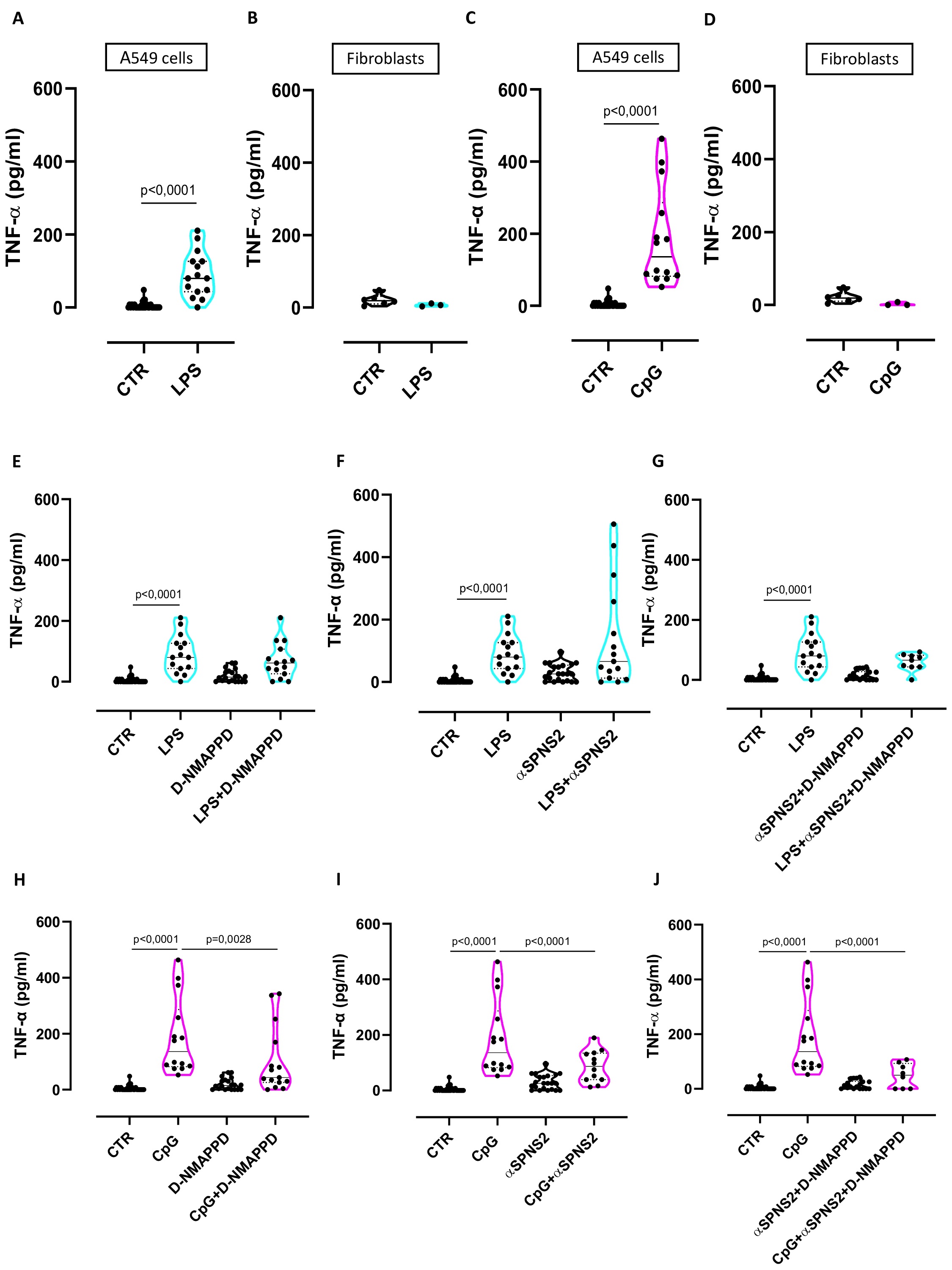Fig. 1. S1P is involved in CpG-mediated TNF-α release. Lung adenocarcinoma A549 cells and normal human fibroblasts were stimulated with TLR4 ligand, LPS 0,1 Ág/ml or TLR9 ligand, CpG 1 Ág/ml for 8 hours and TNF-α release was evaluated. LPS (A and B) and CpG (C and D) stimulation induced TNF-α release from A549 cells (A and C), but not from fibroblast (B and D). TNF-α release from A549 was not altered when ceramidase (E) or/and SPNS2 transporter (F and G) were blocked, after LPS addition. Ceramidase (H) or/and SPNS2 transporter (I and J) inhibition induced a statistically significant reduction of TNF-α release, after CpG stimulation of adenocarcinoma cells. Data are presented as violin plot, showing the median ▒ interquartile range. Statistical differences were assessed with Ordinary ONE-Way ANOVA followed by Tukey's multiple comparison test. Ceramidase inhibitor (D-NMAPPD, 5 ÁM); anti-Spinster homolog 2 antibody (αSPNS2, 10 ng/ml).
